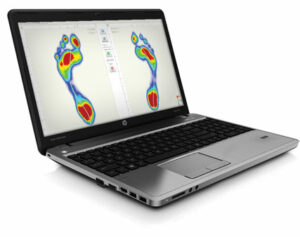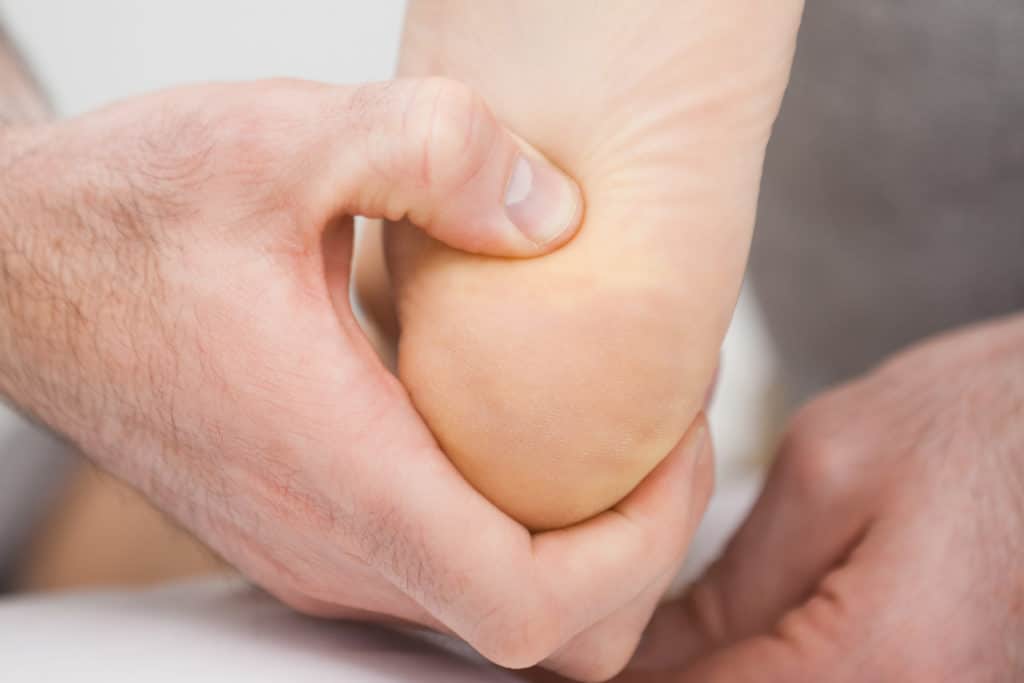Heel pain can be very debilitating. It can keep you from participating in many activities that you enjoy and make everyday tasks more difficult. Heel pain is caused by a variety of things, including plantar fasciitis, heel spurs, and Achilles tendonitis. While heel pain may seem like a minor inconvenience, it can have a significant impact on your quality of life.
In this blog, we’ll look at what the causes of heel pain are and how to treat the symptoms of heel pain.

Policeman’s Heel
Heel pain is often referred to as Policeman’s Heel. This name is derived from the fact that the condition was once commonly seen in police officers who worked long hours on their feet.
It often starts as an intense pain, where the patient cannot put their heel down, resulting in them walking by putting weight on the toes.
Many people experience a sharp intense pain in the heel that is often described as shooting. The patient cannot put their foot down, so they walk by putting weight on their toes. The morning pain can be quite severe, especially when getting out of bed. But it usually reduces after being on your feet, but you may limp for 5 to 10 minutes until the heel feels a little better.
The heel pain will be slight during the day but can come back sharply after sitting for some time, such as working in an office behind a desk all morning.
Sometimes the pain can radiate into the inside arch of the foot becoming just as debilitating.
Again arch pain may feel reduced as the walking continues but returns after a period of rest.
Is heel pain beginning to ruin your life?
Heel pain and arch pain can become very debilitating, making it difficult to do many everyday tasks.
You may notice the pain during these simple day-to-day tasks:
- Pain from getting up in the morning
- Pain walking to the car or train, during a work commute
- Pain halfway through a round of golf and having to stop
- Pain during shopping and having to come up sooner
- Pain when walking the dog, taking much shorter length walks
- Pain at work when getting up from the desk after a period of sitting
- Pain during exercises such as jogging or running

What causes painful heels?
The correct name for heel pain is ‘Plantar Fasciitis’.
Firstly, there are 26 different bones in your feet and you’ll find them all held together by muscles or tendons with ligaments attached at various points throughout. No joints operate solely in the foot, everything connects seamlessly from the heel bone down through the ankle joint! The plantar fascia is the main ligament on the bottom of your foot. It runs from your heel to your toes and is a very strong muscle that supports and holds up the foot arch.
If the plantar fascia fails to support the foot arch it becomes overworked and damaged. This leads to arch collapsing and further stretching of the muscle leading to intense pain where it attaches to the heel bone. Therefore when weight is put on the heel, intense pain can be felt also on the inside arch of the foot.
After some time of experiencing the strain and not receiving treatment, the feet can usually become pronated to a varying degree (this is called a flat foot).
What is the treatment for heel pain?
Here at Waverley Foot Clinic Farnham in Surrey, we offer an extensive range of foot pain treatments, including heel pain treatment.

We recommend contacting us as soon as you begin to feel heel pain. Our expert lead chiropodist Jonathan Kirk will take you through several steps to begin recovery:
- Biomechanical Assessment to confirm the diagnosis – this will help to rule out any other potential causes of heel pain.
- Digital GaitScan to access the level of arch collapse/arch support required.
- If the arch has some capacity / moderate problem – stretching the Plantar Fascia may help
- The problem is usually linked to tight calf muscles – these must also be stretched
- If there is substantial arch collapse – support will be required from orthotic arch support
- We will treat both feet if the problem is only in one foot – often heel pain will occur in the opposite foot at a later date.
- Often the best long-term solution is Orthotic Insoles to support the arch specifically where needed.
- Following our service of providing insoles in the patient’s shoes, the problem is expected to resolve in 7 to 10 days.

Expert advice – from the Waverley Clinic in Farnham, Surrey
Always seek expert advice to ensure the correct diagnosis and treatment plan are administered. Heel pain can be very debilitating, so it’s important to seek help as soon as possible.
To summarise, follow these important steps to reducing your heel pain:
- Get the correct assessment/diagnosis as soon as possible
- Engage in a specific treatment plan to your personal needs
- A long-term solution should be provided – such as Orthotic Insoles for your shoes
Engaging with foot specialists like Waverley Clinic, which is a Chartered Physiotherapist with a special interest in biomechanics and orthotics provision, will help you get back to normal, living a pain-free life as soon as possible.
Why wait in pain any longer? Book an appointment today and begin your heel pain recovery plan.
